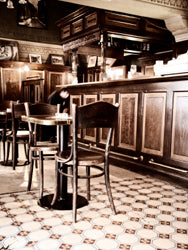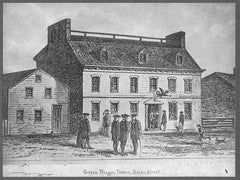 When the Dutch imported the first Arabica coffee trees to Indonesia in 1699, they established the world's first European-owned coffee estates in the process. Dutch dominance in coffee production and trade would span nearly two centuries and result in unprecedented commercial expansion.
When the Dutch imported the first Arabica coffee trees to Indonesia in 1699, they established the world's first European-owned coffee estates in the process. Dutch dominance in coffee production and trade would span nearly two centuries and result in unprecedented commercial expansion.With descendants of the coffee seedlings Baba Budan had smuggled out of a resistant Arabia in their possession, the Dutch introduced Arabica cultivation to Indonesia with plantings in their East Indian colonies of Ceylon (now Sri Lanka) and Java. By the early 1700s, commercial coffee production was fully operational in the Pacific region.
Blight would eventually attack the leaves of coffee planted in Sri Lanka, but Java's coffee became a major island crop. The world's elite could now indulge in coffee from two origins: Mocha, named for Yemen's primary shipping port, and Java. A third option was the celebrated Mocha Java blend resulting from the union of Yemen Mocha and Java coffees. Soon the Dutch colonies of Sumatra, Timor, and Bali emerged as primary coffee suppliers to Europe, giving rise to the Dutch East India coffee trade.
European aristocrats embraced coffee, Pope Clements VII baptized it, the fashionable extolled it, artists celebrated it, and the coffeehouse institutionalized it. Europe's coffeehouses served as gathering places, just as they had in Arabia, for merchants, intellectuals, politicians, and clergymen to conduct their business and ponder the news of the day. Enormously popular in London, the coffeehouse first appeared at Oxford University in 1650 and within fifty years the city had embraced more than 2,000 establishments. London's coffeehouses were affectionately known as Penny Universities. For the price of a cup of coffee, one could while away the day in intellectual pursuit and sobriety.
 The introduction of coffee to America in the early 1700s produced a similar effect on the colonies. Coffeehouses sprang up to dispense the rich nectar to patrons engaged in spirited caffeine-induced conversation. After revolutionaries plotted the Boston Tea Party at the city's Green Dragon coffeehouse, colonists were persuaded to abandon tea drinking altogether in favor of coffee. Americans have remained faithful to their beloved beverage since that time, consuming more coffee than any other nation in the world.
The introduction of coffee to America in the early 1700s produced a similar effect on the colonies. Coffeehouses sprang up to dispense the rich nectar to patrons engaged in spirited caffeine-induced conversation. After revolutionaries plotted the Boston Tea Party at the city's Green Dragon coffeehouse, colonists were persuaded to abandon tea drinking altogether in favor of coffee. Americans have remained faithful to their beloved beverage since that time, consuming more coffee than any other nation in the world. By the 19th century, Dutch commerce had become so successful that Amsterdam rose to prominence as a world coffee trading center and "Java" became synonymous with coffee. Java led the world in coffee production until 1865 when leaf rust nearly decimated the industry. By the 1900s hardier, yet inferior, robusta beans had virtually replaced the entire ruined arabica crop. When Indonesia achieved its independence following World War II, the government set aside colonial estates once owned by the Dutch for Arabica cultivation.
At the same time Java was suffering from the devastating decline of its coffee industry, Brazil was emerging as successor to Indonesia's supremacy in coffee production, a position Brazil maintains to this day. Indonesia's gradual recovery as a coffee growing region currently places it fourth among the world's exporters, yet Java's coffee crop echoes the losses of more than a century ago. Over 90 percent of the coffee grown and 95 percent of the coffee exported is robusta. Considered from a global perspective, Java's finest Arabica coffees are actually quite rare.
 Coffees of Indonesia take full advantage of the area's equatorial climate, generous volcanic soil, and high altitude. Known as the "Golden Triangle" of exceptional coffees, the Sumatra-New Guinea region brings unparalleled body, layered complexity, and spice-laden flavors to the cup. These Arabica treasures elegantly define the splendor of the Malay Archipelago.
Coffees of Indonesia take full advantage of the area's equatorial climate, generous volcanic soil, and high altitude. Known as the "Golden Triangle" of exceptional coffees, the Sumatra-New Guinea region brings unparalleled body, layered complexity, and spice-laden flavors to the cup. These Arabica treasures elegantly define the splendor of the Malay Archipelago.